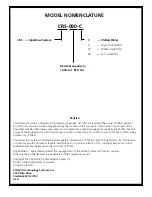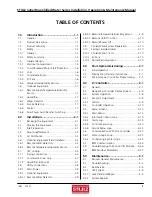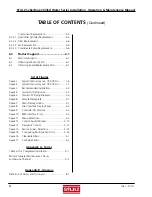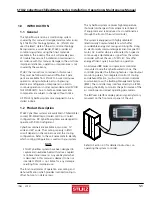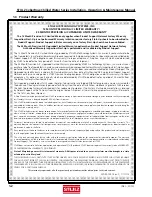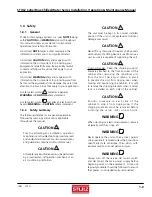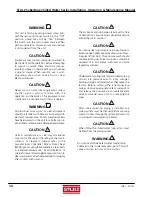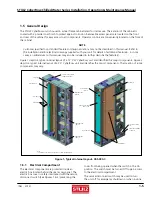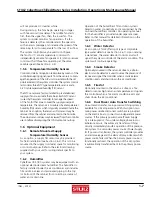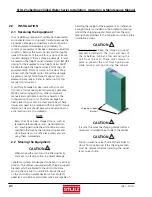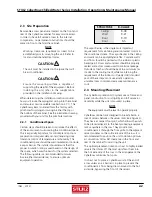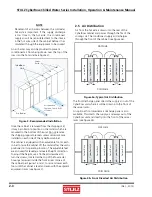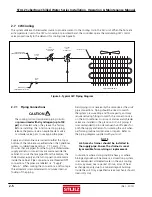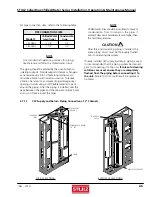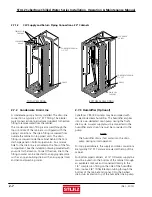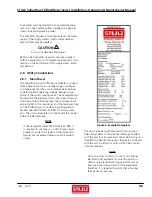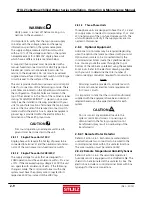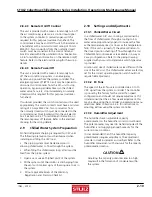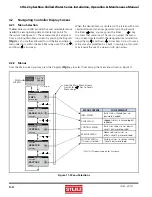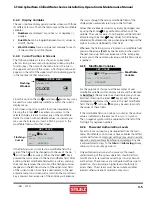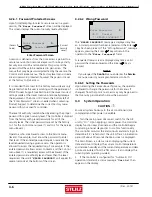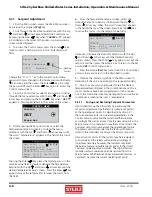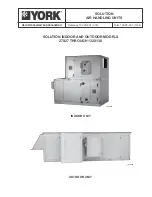
(Dec., 2013)
STULZ CyberRow Chilled Water Series Installation, Operation & Maintenance Manual
2-5
2.7 CW
Cooling
The system utilizes a chilled water source to provide coolant to the cooling coil in the A/C unit. When the hot aisle
air temperature rises to the CW cut-in setpoint plus dead band, the controller opens the modulating CW control
valve proportionally to the demand for cooling (see Figure 5).
CHILLED WATER COIL
SUPPLY
INLET
RETURN
OUTLET
FIELD PIPING BY INSTALLER
INTERCONNECTING
SCHRADER VALVE
3-WAY
MIXING VALVE
OPTIONAL
A
AB
B
FIELD PIPING BY INSTALLER
INTERCONNECTING
A
AB
2-WAY
MIXING VALVE
STANDARD
Figure 5- Typical CW Piping Diagram
2.7.1 Piping Connections
CAUTION
The cooling coil (and associated piping circuits)
are
pressurized with dry nitrogen (up to 100
psi)
and sealed when they leave the factory.
Before installing the interconnecting piping,
release the pressure via an available stem valve
or schrader valve prior to uncapping the pipes.
Supply and return lines are routed to either the top or
bottom of the cabinet as specifi ed when the CyberRow
system is ordered (see Sections 2.7.1.1 and 2.7.1.2).
On units that are piped from the top, the chilled water
supply and return connections are made outside the
cabinet. On units that are piped from the bottom, the
chilled water supply and return connections are made
inside the cabinet. Pipe connections are threaded NPT
connections. The pipes are labeled; i.e. “Supply”,
“Return”. When making the connections, a tefl on tape
thread sealant is recommended to minimize internal
fouling of the piping.
Field piping is not necessarily the same size as the units’
pipe connections. Piping should be sized to match
the system pressure drop and fl ow capacity, and may
require reducing fi ttings to match the connection size
on the air conditioner. An air vent and several schrader
valves are installed in the precision A/C unit piping. It
is recommended to provide manual shut-off valves for
both the supply and return for isolating the unit when
performing routine maintenance or repairs. Refer to
the piping diagram supplied with your unit.
NOTE
A 60-mesh strainer should be installed in
the supply pipe. Ensure the strainer is read-
ily accessible for servicing or replacement.
In situations where scaling could be heavy, or where
biological growth will be present, a closed loop system
is recommended. Untreated water in the unit cooling
coils may cause, over a period of time, a loss of heat
exchange capacity due to a mineral deposit build-up
inside the coil. Only a qualifi ed service mechanic should
clean dirty coils.

